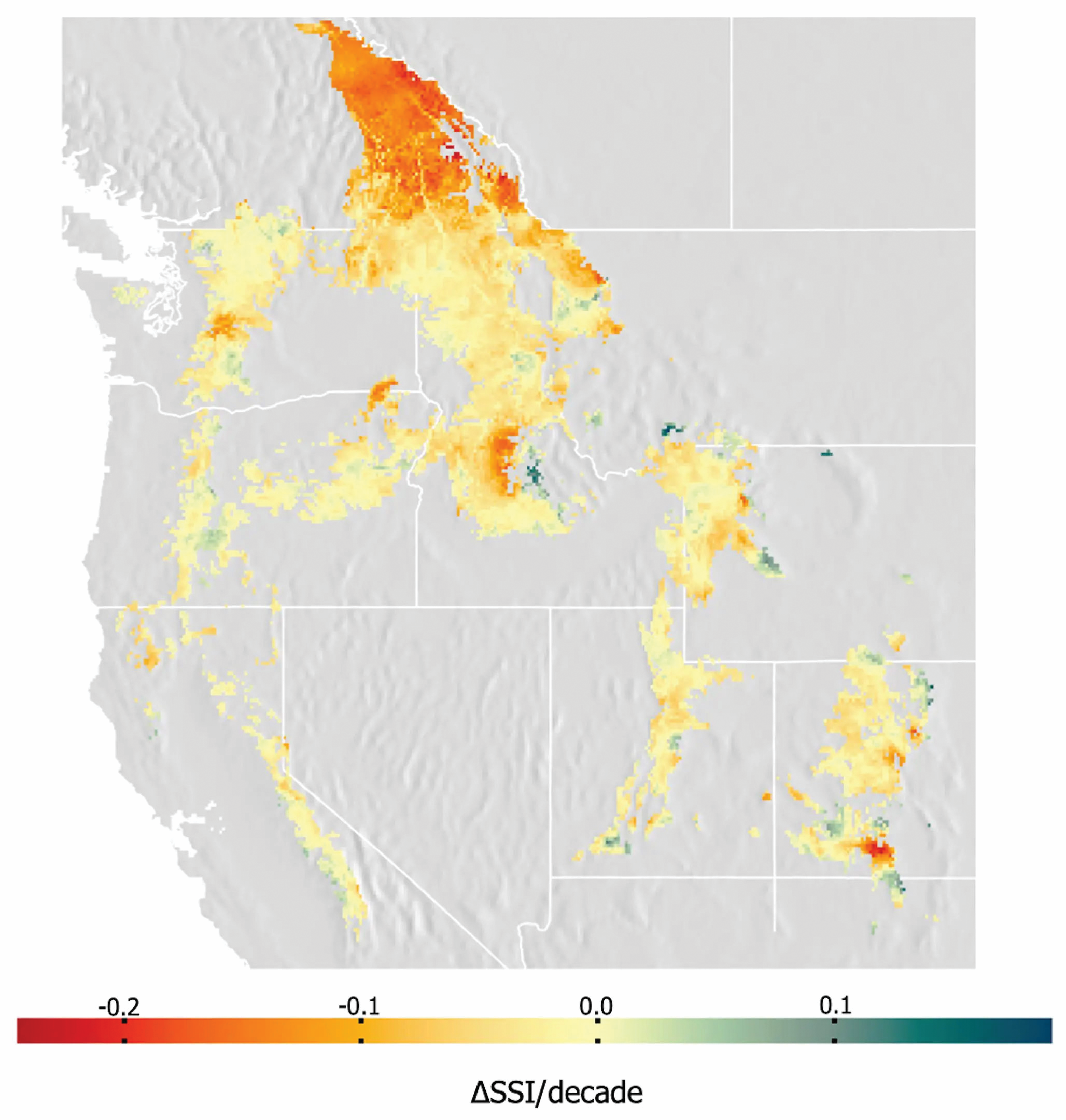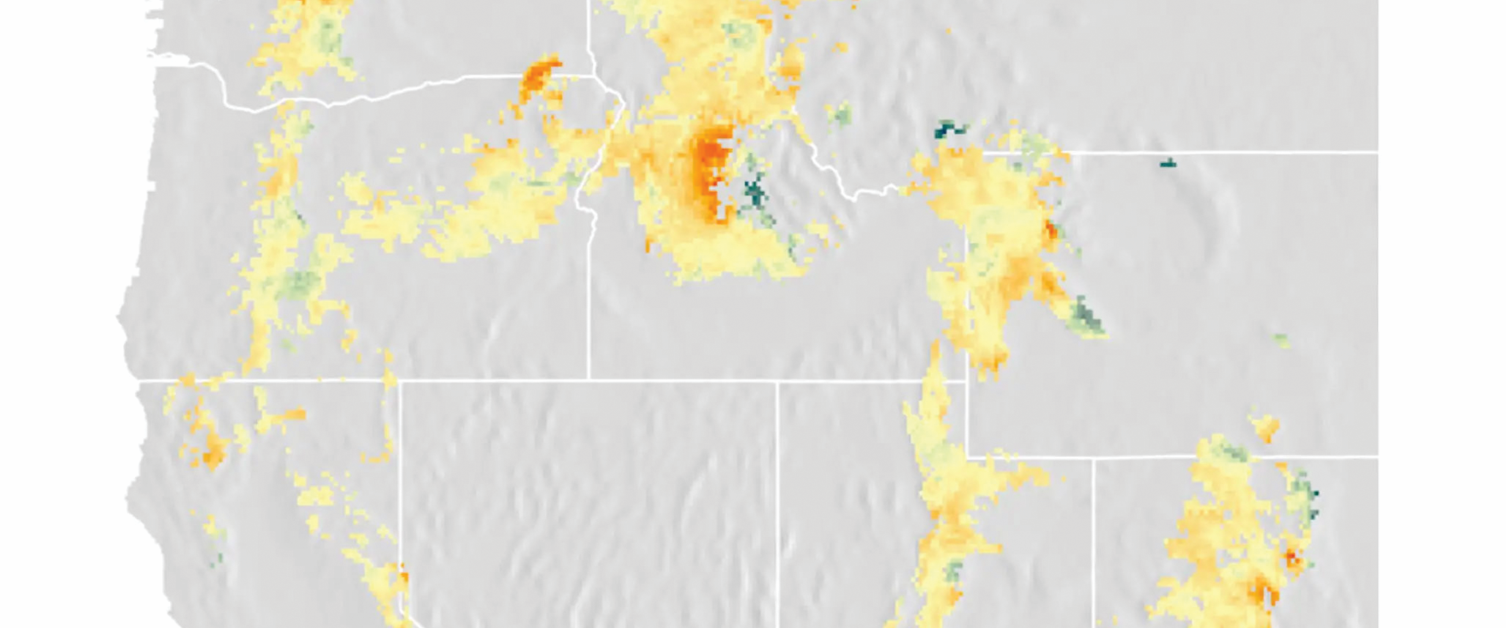Lacking the Pack
- By AMS Staff
- Nov 20, 2023
92% of mountainous western North America has shown a decline in Snow Storage Index (SSI) from 1950 to 2013. [Image Credit: Hale et al. 2023]
PROBLEM: In the North American West, where mountain snow is essential for water supplies throughout the region, accurately determining the extent of the snowpack is crucial for water resource planning. But the snow water equivalent, a metric commonly used by water managers to plan for the year, only provides information for the time it is measured, and “doesn't give you a sense as to how long that snow water equivalent has been on the ground,” says Noah Molotch of the University of Colorado Boulder (UCB).

SOLUTION: Using publicly available data sources, Molotch and colleagues developed a new metric called the Snow Storage Index (SSI), which accounts for both the timing and amount of snowfall and snowmelt, and therefore provides a more complete picture of the time between when precipitation falls during the cold season and when it becomes available as surface water. “The snow storage index allows us to look at snow water storage, not just in the context of how much is there at any given time, but the duration of that storage on the ground,” Molotch explains. A lower SSI means that snow both accumulates and melts in the colder part of the year. The metric was introduced in a recent study published in Nature Communications Earth & Environment, which found that the SSI decreased for the years 1950–2013 across a vast majority of mountain ranges in western North America, and that more than 25% of those regions have experienced significant SSI decline, as changes occur in the timing of regional snowmelt and the kind of precipitation that falls. “On average and in every mountainous region that we looked at, snowmelt is occurring closer in time to when it fell,” notes lead author Kate Hale, a recent UCB graduate who is now at the University of Vermont. “The timing of water availability is shifting toward earlier in the springtime, with less snowmelt and water availability later in the summertime, suggesting that there will be water scarcity later in the year.” The researchers believe the SSI could help water managers and scientists make more accurate predictions as water resources dwindle. “The snowpack is eroding and disappearing before our eyes,” Molotch says. “That's going to present challenges in terms of managing the infrastructure that's allowed the western United States to flourish over the last 100 years.” [Source: University of Colorado Boulder]
* For more content from the Bulletin of the American Meteorological Society, please click here.
